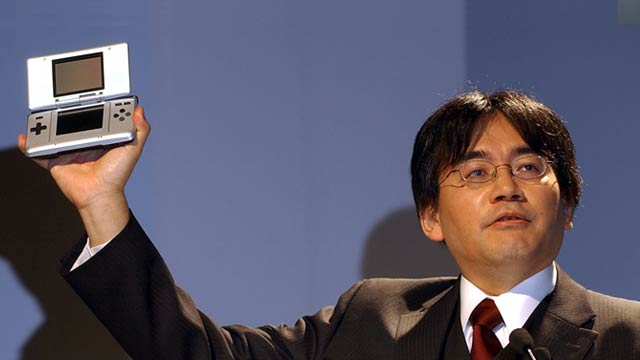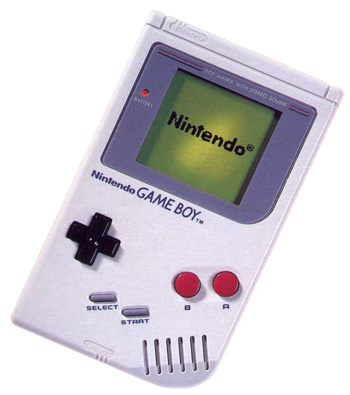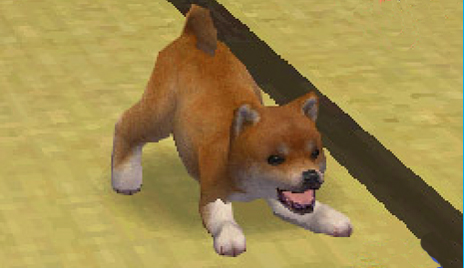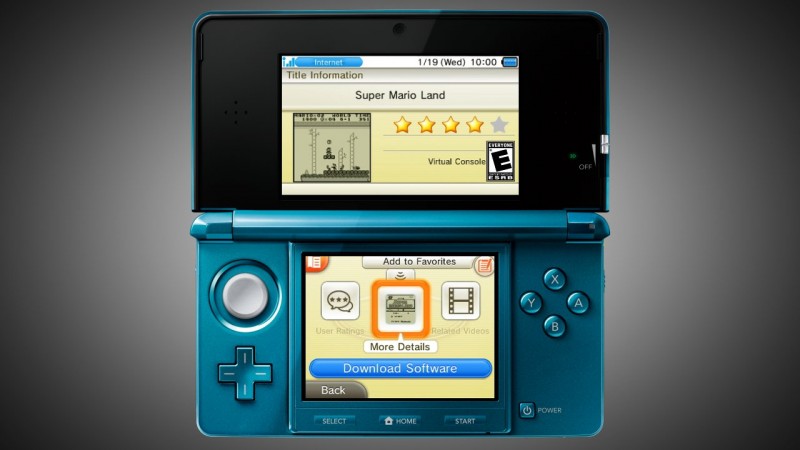
We all know DS for the massive juggernaut of a handheld it has become, but everybody might not be familiar with the system’s surprisingly interesting history. If Nintendo could have seen where DS would have ended up in the world of gaming back before (and even shortly after) the system launched, they would most likely be shocked by the results. In the six years since DS hit the market, it crushed the competition, became the most successful handheld of all time, and is neck-and-neck with PS2 for the title of best selling console of all time. Not only have these results surprised plenty of people, but they weren’t really part of Nintendo’s plan; though I doubt the management and shareholders are complaining.
Nintendo DS is synonymous with handheld gaming for millions of younger gamers, but for the old school crowd, that honor went to Game Boy, the big gray brick that effectively defined handheld gaming and gave birth to the trend of refreshing the hardware every few years. Sega Game Gear and Atari Lynx made attempts at stealing the crown with superior graphics, but their failures emphasized that handheld gaming was based on battery life and portability– the two features that have always been the feathers in Nintendo’s handheld hat. Game Boy Color upped the visuals in 1997 while Game Boy Advance took it a step further in 2001, further cementing Nintendo’s unrivaled dominance.

The brick that changed the world
In 2004, Nintendo unveiled the original DS, a radical departure from the status quo and an obvious experimentation in new approaches to gameplay with its two screens and touch sensitivity. At the time, Nintendo described the system as a “third pillar,” a new brand of system separate from Game Boy and GameCube and not meant to be a replacement of either. Nintendo had previously experimented with such radical concepts with Virtual Boy, a strange departure from gaming conventions that fell flat as it lacked the portability of Game Boy and promise of the upcoming, more conventional and powerful Nintendo 64. Just as Virtual Boy stood and fell on its own, Nintendo didn’t want DS to risk tarnishing any existing brands should it meet the same fate as its experimental brethren. DS was, of course, a more conservative departure than Virtual Boy, but it is always risky to launch a new brand, and Nintendo didn’t want the legions of Game Boy fans to fear that their beloved console was being kicked to the curb or shortchanged. PSP had been unveiled with its near-PS2 level graphics and multimedia capabilities, so most gamers had just assumed the next Game Boy would challenge that, while DS was just a quirky little diversion to play around with in the meantime.
Of course when DS did see the light of day in late 2004, it looked like it wouldn’t fare nearly as well as its venerated predecessors. The best game at launch, Mario 64 DS, was a remake with a few extra bells and whistles and inferior controls, while the rest of the library played around with the new features to varying levels of success. Feel the Magic did some interesting things and effectively gave birth to the touch based minigame collection concept, while many other games, like Pac-Pix, simply felt like glorified tech demos. Thankfully developers started to figure out what worked and began releasing some amazing titles; Kirby Canvas Curse used touch mechanics brilliantly to re-imagine both Kirby and the platforming genre; Mario Kart DS showed off the system’s online potential; while great entries in the Castelvania, Final Fantasy, and Sonic series, among others, pleased serious gamers and revealed that third parties were starting to understand the hardware too. Altogether, these games made DS successful, but it was a radically different wave of titles that would redefine DS.
DS was not just an experiment in new play mechanics, but it was also a test platform for expanding gaming’s popularity to new audiences, specifically non-gaming girls and adults. Nintendogs was effectively a virtual pet on steroids, offering a great deal more detail and interaction than the Tamagotchi fad that had faded so long ago. Plenty of traditional gamers enjoyed Nintendogs, but it more importantly captured the attention the attention of animal-loving girls, and as a side effect spawned an unholy torrent of imitators, including the seemingly endless mass of Petz games.
And then came Brain Age, a bit of educational software that seemed to undo the perception in many adults that gaming was nothing more than a mind melting pastime for antisocial losers. Naturally, this game helped turn DS into a powerhouse of educational games and software. DS has played host to language tutors, cookbooks, music lessons, and even weight loss programs. Nintendo’s stable of classic franchises established DS as a successful system, but it was the varied array of software that expanded the market by at least a couple dozen million new gamers.

A Nintendog prepares to land the final blow on the Game Boy brand
With its new features and revolutionary library of non-traditional games, DS was a gamble, but it definitely paid off. Unfortunately this success came at a cost to older, more nostalgic gamers. DS might have originally been described by Nintendo executives as a “third pillar” of gaming hardware, separate from Game Boy, but its unprecedented success effectively drove the old standard-bearer of portable gaming into the realm of irrelevance. The name Game Boy held great significance for the old guard, but that name was essentially meaningless to tens of millions of new gamers.
Nintendo could have easily continued the Game Boy brand with a more powerful, more traditional handheld device, but the costs of developing and marketing a new system are substantial, and it likely would have just shared the market with DS rather than expanding the customer base. Had Game Boy fans avoided DS like the plague, then it might have continued and Nintendo may very well have established its three pillars of a home console, a handheld for dedicated gamers and a handheld for the casual market. Instead, DS really did have something for everyone and its immense popularity proves it.
With 3DS a mere month away, I think it is safe to say we will not be seeing the Game Boy brand making a comeback anytime soon. DS has simply become too synonymous with portable gaming, and 3DS is continuing on the original’s theme of experimentation. The glasses-free 3D display is the most obvious example, but the new Street Pass mode also has a great deal of potential to expand the social aspect of handheld gaming.
However, I also can’t help but feel that 3DS has a bit more of Game Boy’s focus on pure gaming than its predecessor. First of all, there is the promise of a Virtual Console for classic Game Boy titles, and then there are the little touches, such as the inclusion of an analog stick and better online integration. And from the tech side, 3DS definitely seems to be more appealing to major developers; but it might not be able to keep pace with 360, PS3 or the upcoming PSP2… I mean NGP. Yet the fact that Capcom has got its latest engine running on the system without a hitch and has ported the visually stunning and feature-packed Super Street Fighter IV to the system is definitely promising. Game Boy as a brand might be dead, but its spirit carries on.

You can’t keep a good Game Boy down
The bard said it best: “What’s in a name?” A Game Boy by any other name would be just as awesome. Yes, those old names tickle our nostalgic fancies whenever we hear them, but they are ultimately little more than antiquated symbols representing something we can still easily get. Nintendo DS might have been a drastic change from Game Boy, but it still offered the absolute best in portable gaming, in addition to a plethora of new features and ideas.
The truth of the matter is that the three pillar strategy was never really Nintendo’s primary focus, it was a contingency plan instead: if Nintendo DS never really took off, Nintendo could fall back on the old standard that was Game Boy and everything would be right in the world. Instead, DS revolutionized the portable market, vastly expanded the market, and sold nearly 150 million units– continuing on with Game Boy would have been unnecessary and redundant. Ultimately, the picture remains the same; Nintendo is making the best handheld platform on the market with the perfect balance of performance and usability and a library unchallenged by its rivals.
In other words, the only thing that’s changed is the name.




 ShareThis
ShareThis







Its Atari lynx. Jaguar is the their 64 bit home console. Nice read.
Thanks for noticing that! Fixed.
I actually remember fact checking that but I must have forgot to make the change afterwards.
Silly me!
Wampdog should Totally Read This
And yet… I still wish there were a Game Boy. I love my DS (as I mentioned), but I miss calling it a Game Boy. Maybe it’s got too much of that late 80s-early 90s funky-freshness, but Game Boy just sounds like something I’d want to play. I hope that some day Nintendo will give some sort of nod with its handheld naming scheme.
I agree with you Matthew, I miss the Game Boy name. I wish the 3DS was named Game Boy 3D.
I suppose then you would have to have a single screen as DS stands for ‘dual screen’ I think I’d prefere that too.
I’m glad the name Game Boy is dead & gone. I hated that name.